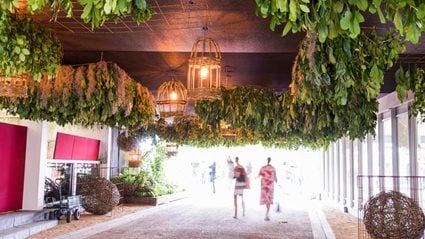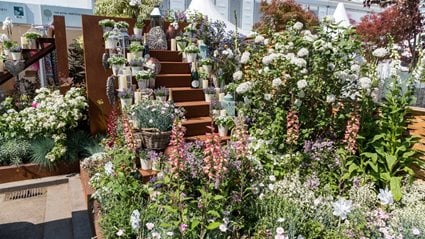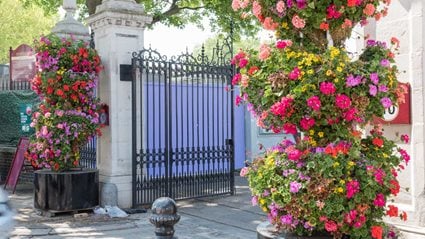Did you know...
- The arresting sculpture that formed the garden's explosive focal point was best viewed from the front, through an impressive vista in the rusted metal screens and enveloping planting. It represented a worm hole through time, the sculpture being either the beginning or end of the universe. An appealing verdigris-finished seat, inspired by human DNA, was set halfway along the path
- The planting gradually became more dense further into the garden, with steppe-style planting at the front and more sophisticated combinations in the shade further back, representing mankind's increasing appreciation of the asthetic. Key plants included golden grass Stipa gigantea, purple-flowered bearded iris, caper spurge (Euphorbia lathyrus), vibrant pink Dianthus carthusianorum, Thalictrum, salvias, lupins and a bold row of impressive large-leaved Hosta 'Sum and Substance'
- The garden's boundary featured a yew hedge at the front. A mirrored wall water feature stood halfway along the boundary, beside the seat. This was set at an angle to prevent self reflection, but also provided glimpses of past and future. As visitors ventured deeper into the garden, the boundary became a concrete wall
About the garden
This design was a garden theatre – a design to showcase how sculpture and planting can tell a narrative and promote reflection. In this garden, the different layers represented mankind’s evolving relationship with the environment. At the beginning of the garden, the planting and art were free-form and natural, with grasses and perennials colonising a gravel surface to symbolise the natural landscape. From there, Betula nigra emerged, its peeling branches and flaky bark providing an architectural quality to the design.As time advances, the sculptures evolved geometrically. Man’s evolution was mirrored in the underplanting, which spanned towards controlled, lush, cultivated specimens including peonies, lupins, geums, hostas and geraniums. The pivotal wormhole view through the garden (a theoretical space-time passage) ended with a sculpture of Aeon. This represented the earth’s nucleus of energy that keeps our planet in a state of equilibrium.
All Show Gardens












prev
next
Get involved
The Royal Horticultural Society is the UK’s leading gardening charity. We aim to enrich everyone’s life through plants, and make the UK a greener and more beautiful place.

